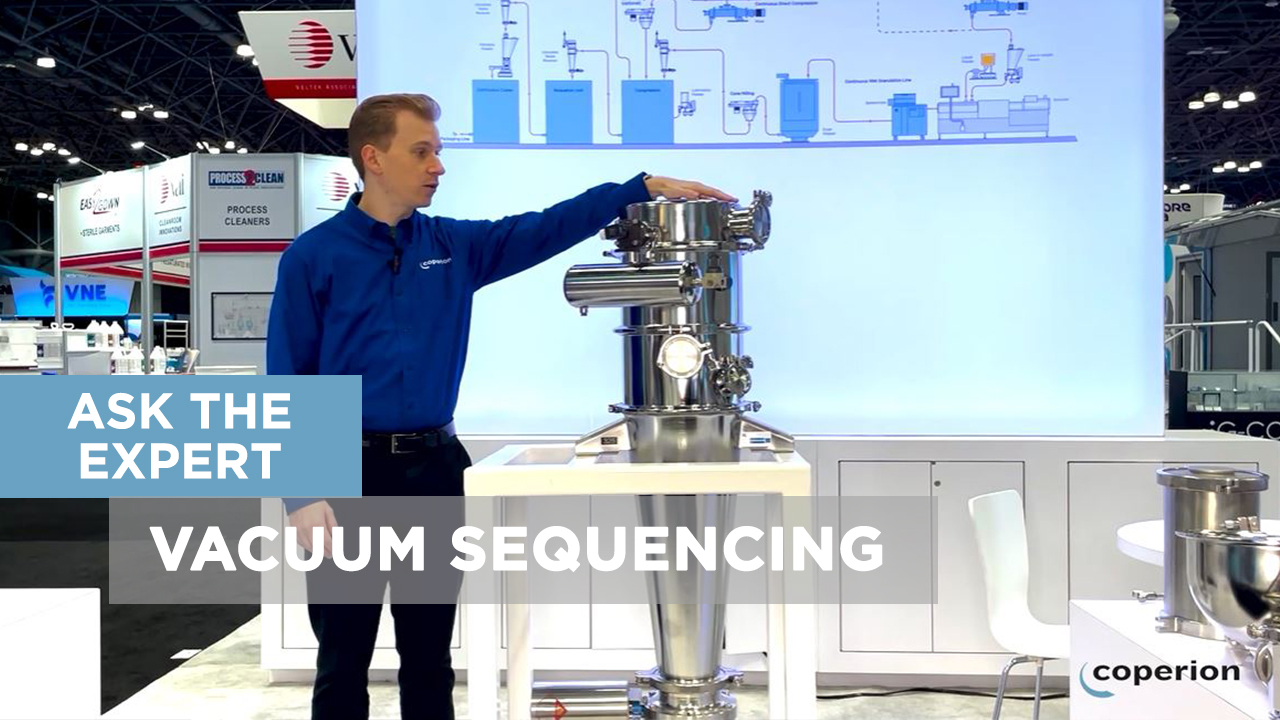Coperion vacuum sequencing receivers are designed to high quality standards for pneumatically conveying powders, pellets and granular materials for the bulk material handling industries. Vacuum sequencing is ideal for loss-in weight (LIW) feeder refill because it allows the receiver above to be primed and ready for material discharge when the feeder below requires a fast and efficient refill. A quick and consistent refill is one of the major factors in maintaining high accuracy within the LIW feeder especially when dealing with continuous applications.
The Coperion K-Tron line of P-Series vacuum receivers are ideal for applications that require a sanitary design to meet the ridged sanitary requirements of the food and pharmaceutical industries. The P-Series receivers are specially designed for sanitary material handling solutions, particularly with free or poor flowing powders and friable materials. P-Series sanitary receivers can be used for gain-in-weight or loss-in-weight feeder refill applications, simple up and in systems or engineered for larger, central vacuum conveying systems.
We asked Lucas Ford, System Sales Engineer, to explain how vacuum sequencing works and why it is good for LIW feeder refill applications.


